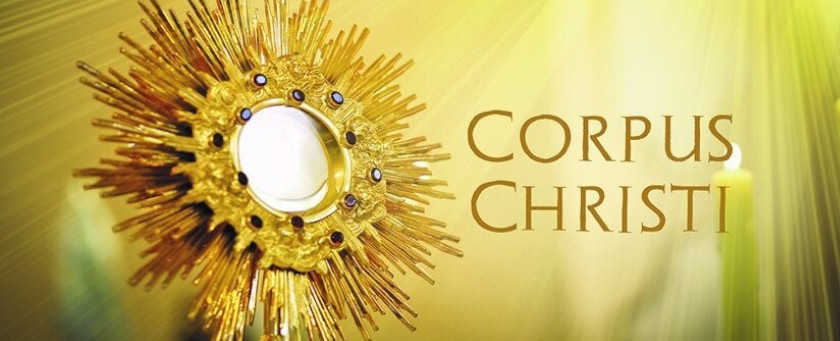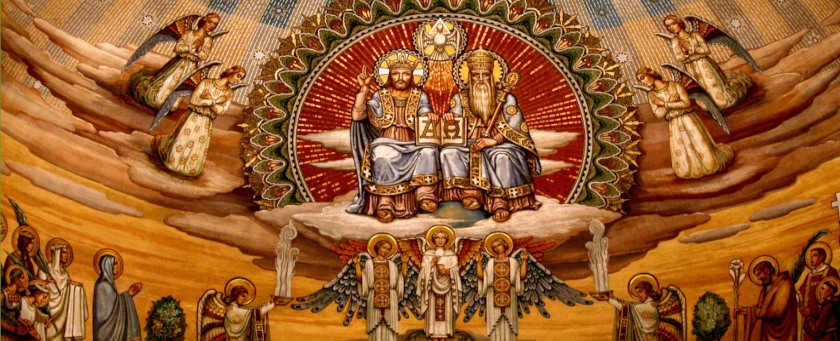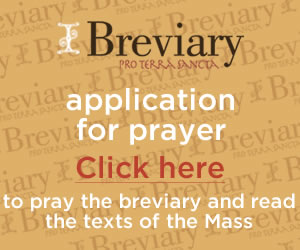Justification, Sanctification, and Glorification Through the Cross
Good Friday of the Lord's Passion, Year C
Readings:
Is. 52:13-53:12; Ps. 31; Heb. 4:14-16, 5:7-9; Jn. 18:1-19:42
(Audio recorded live, 15 April 2022)
Today, we reach the climax of the Easter Triduum as we focus on our Blessed Lord’s Suffering and Death on the cross. The cross is at the center of our Christian life; it is at the center of our Triduum. The cross is the sign of our justification, our sanctification, and our glorification. First, as a sign of our justification. There can be no forgiveness of sins without the shedding of innocent blood. We see this throughout Sacred Scripture, beginning with Adam and Eve, and the offering that was made to God. In the Book of Genesis, it says that God made for the man and woman clothes out of animal skins. Those skins came from an innocent animal, which had to be sacrificed. The shedding of innocent blood has always been the sign of justification, the forgiveness of sins. Moses mixes blood and water at the time of the Sinai Covenant, and on the Day of Atonement, the Levitical High Priest would take blood and sprinkle it on the mercy seat of the Ark of the Covenant. This shedding of innocent blood is acceptable to God as an offering for sin. If the blood of irrational beasts is acceptable to God as a sin offering, how much more so the blood of his Only Begotten Son? And to what end? As we heard last night at the Lord’s Supper, “This is my blood of the new covenant, which will be poured out for you and for many for the forgiveness of sins.”
A moment ago, we heard how the soldier pierced Jesus’ side and blood and water flowed out. This is the blood of the new covenant, which has been poured out for us. The blood symbolizing the Eucharist, and the water, symbolizing our baptism and the birth of the Church. Without blood, there is no baptism, without baptism, there can be no Eucharist. The two are inextricably linked to our justification, that is, the forgiveness of sins.
Second, the cross is our sanctification. This is the ongoing process of living the Christian life, following the way of Jesus, conforming our life after the life of the Master. Sanctification is not something we experience once and forget about. Indeed, our baptism has opened the door to our sanctification, which is an ongoing reality. We are being made holy, set apart by God to carry out the work of sanctification. And while there is nothing we can do, no action we can perform, ritual or otherwise, to merit God’s grace, our celebration of the sacramental life, the life of virtue, the corporal and spiritual works of mercy, our love of God and neighbor, all opens us to receive God’s grace. God desires that we conform our life after the life of his Son, to image the Image of God, who is Jesus, and to do so with humility, integrity, and love. This is not possible without the cross, and the sanctifying grace that now comes to us because Jesus submitted to the wood of the cross. We do well to take this reality to heart so that our sanctification may be complete.
Lastly, the cross is our glorification. Just as there is the Church Militant on Earth, the Church Suffering in Purgatory, and the Church Triumphant in Heaven, we must pass through the cross of justification and sanctification before we can be glorified with Christ. Jesus said it himself on the road to Jerusalem, “If anyone wishes to come after me, he must deny himself and take up his cross daily and follow me” (Lk. 9:23). Where is Jesus leading us? He is leading us to his Father in heaven, who so loved the world that he gave his only begotten Son so that all who believe in him might not perish, but might have eternal life. To be glorified, then, is to reign with Christ, but in order to do that, we must first be justified and sanctified, freed from sin and made holy, ready to behold him in his glory.
And so, this Good Friday, we focus on the sign of our salvation, the tree of torture become the Tree of Life. As we venerate the cross, we venerate the sacrifice of Jesus, who freed us from sin and became the source of eternal salvation. So let us confidently approach the throne of grace to receive mercy and to find grace for timely help.





Twitter
Facebook
Pinterest
Email